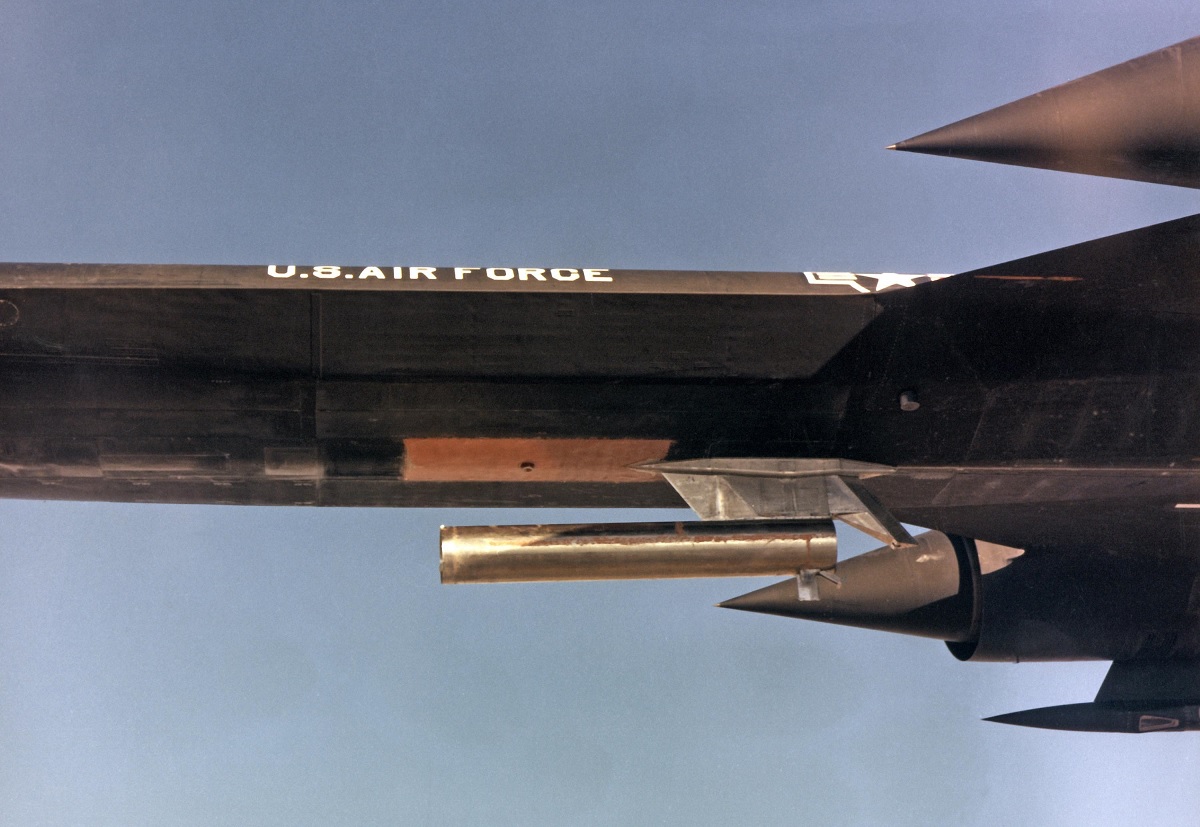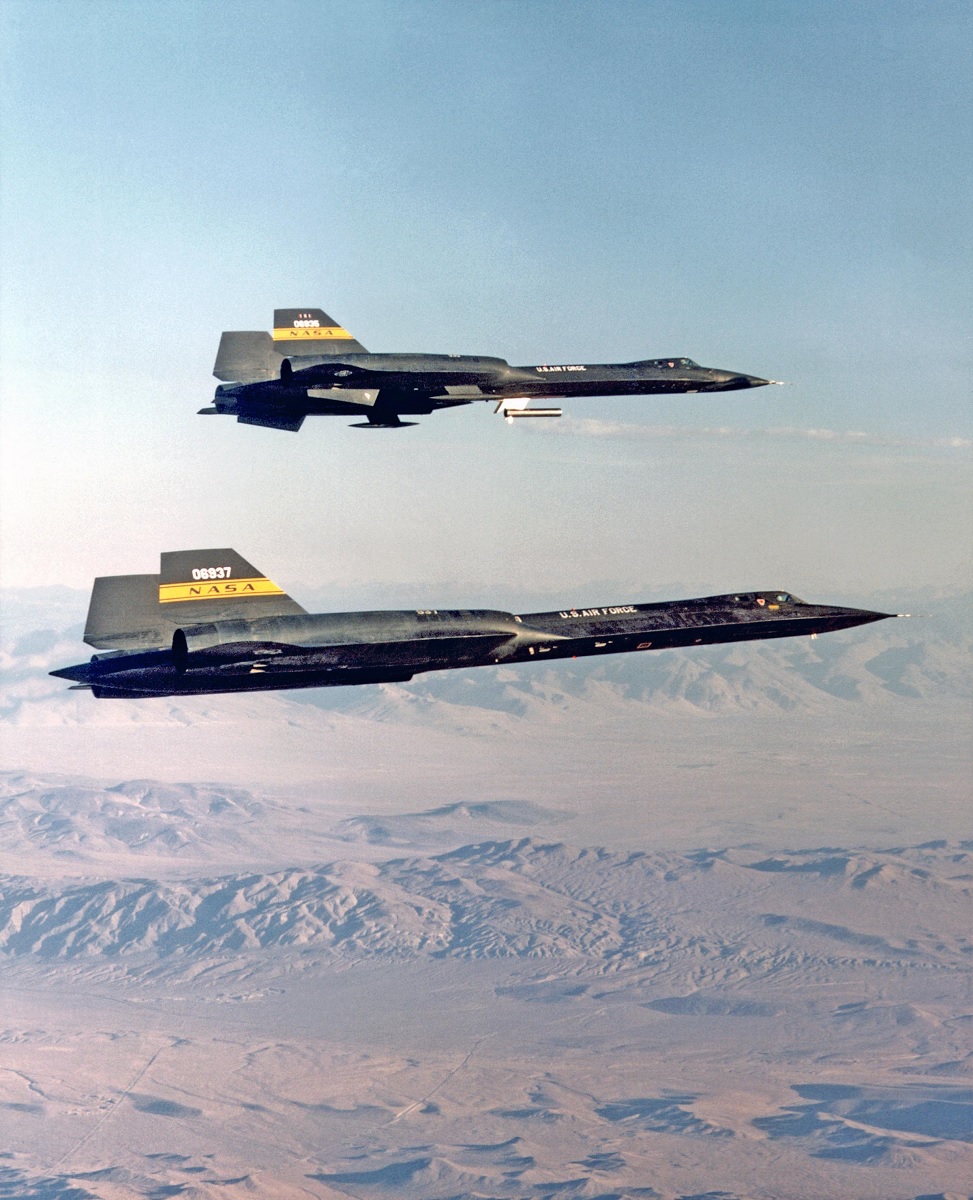The NASA YF-12 Blackbird research program was ambitious; the plane, unless it was grounded for extensive maintenance or modification, flew on average once every week
The images in this post taken in 1975 show NASA YF-12s carrying the so-called “coldwall” heat transfer pod on a pylon beneath the forward fuselage.
The Langley Research Center’s coldwall experiment involved a stainless steel tube that was fitted with thermocouples and pressure sensors. The tube was refrigerated using liquid nitrogen and was covered with a unique insulating coating. At Mach 3, the tube might have its insulation pyrotechnically blown away, leaving it immediately exposed to the temperature environment. The experiment had a lot of in-flight issues, like engine unstarts, but eventually, the flight was successful.
The Flight Research Center’s role in the YF-12A, a Lockheed A-12 interceptor, which started in 1967, is noteworthy. Data from the Ames wind tunnel that had been produced in the strictest of secrecy was of interest to the Ames Research Center. Also, the YF-12A was seen by the Office of Advanced Research and Technology (OART) as a way to enhance high-speed technologies that would aid in the development of supersonic transport (SST).
The U.S. Air Force (USAF) offered NASA the use of two YF-12A aircraft, 60-6935 and 60-6936 since the USAF required technical assistance to fully operationalize the SR-71A, the latest reconnaissance variant of the A-12 family. In June 1969, a combined NASA-USAF program was established.
The 935 was prepared for flight for three months by technicians from NASA and the Air Force. Col. Joe Rogers and Maj. Gary Heidelbaugh of the SR-71/YF-12 Test Force completed a successful maiden flight on December 11, 1969, which officially launched the flight program.

During the program, NASA pursued a loads research program that included inflight heating, skin-friction cooling, “coldwall” research, a heat transfer experiment, flowfield studies, shaker vane research, and tests in support of the Space Shuttle landing program, while the Air Force focused on military applications.
The second YF-12A, 936, made 62 flights while 935 eventually took over as the program’s workhorse, flying 146 times between December 11, 1969, and November 7, 1979. On June 24, 1971, this aircraft was destroyed in a non-fatal crash, and it was replaced by the YF-12C SR-71A 61-7951, which had YF-12A inlets and engines and the bogus tail number 06937.
Clarence “Kelly” Johnson created the Lockheed A-12 family, also known as the Blackbirds, which were made primarily of titanium to withstand aerodynamic heating. The Blackbirds could cruise at Mach 3.2 and reach altitudes of more than 80,000 feet when powered by JP-7. The A-12 was the first model, a CIA reconnaissance aircraft that made its maiden flight in April 1962. In 1963, a version for interceptors known as YF-12A was created. The SR-71, a reconnaissance variant used by the USAF, made its first flight in 1964.
The leading and trailing edges of the A-12 and SR-71 designs included high-temperature fiberglass-asbestos laminates.
The NASA YF-12 research program was ambitious; unless the plane was down for extensive maintenance or modification, it flew once every week on average. 3.1 million dollars were spent on the program annually merely to do the flight tests. Pilots Fitzhugh Fulton and Donald Mallick, flight test engineers Victor Horton and Ray Young, and other NASA personnel flew the YF-12. John Manke, William Dana, Gary Krier, Einar Enevoldson, Tom McMurtry, Steve Ishmael, and Michael Swann were among the other NASA test pilots that flew the YF-12A. Only Fulton, Mallick, Horton, and Ray piloted the YF-12C.

Source and Photo by NASA

